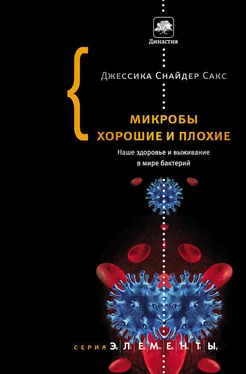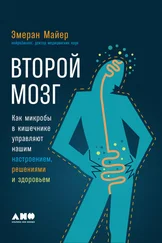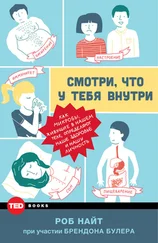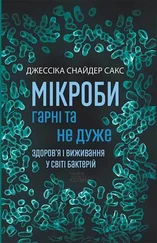31 Curtis Donskey et al., “Effect of Parenteral Antibiotic Administration on Persistence of Vancomycin-Resistant Enterococcus faecium in the Mouse Gastrointestinal Tract”, Clinical Infectious Disease 180 (1999),
384-390.
32 Curtis Donskey et al., “Effect of Antibiotic Therapy on the Density of Vancomycin-Resistant Enterococci in the Stool of Colonized Patients”, New England Journal of Medicine 343 (2000), 1925–1932.
33 Michelle Hecker et al., “Unnecessary Use of Antimicrobials in Hospitalized Patients: Current Patterns of Misuse with an Emphasis on the Antianaerobic Spectrum of Activity”, Archives of Internal Medicine 163 (2003), 972–978.
34 “Severe Clostridium difficile – Associated Disease in Populations Previously at Low Risk – Four States, 2005”, Morbidity and Mortality Weekly, December 2, 2005.
35 R. Viscidi et al., “Isolation Rates and Toxigenic Potential of Clostridium difficile Isolates from Various Patient Populations”, Gastroenterology 81 (1981), 5–9; L. V. McFarland et al., “Nosocomial Acquisition of Clostridium difficile Infection”, New England Journal of Medicine 320 (1989), 204–210.
36 Paul Byrne, “Toenail Surgery Nearly Killed Me, Jamie-Lee, 15, One of Youngest Victims”, Mirror [U. K.], August 30, 2005; “Hospital Blamed for Mum’s Horrible Death”, Windsor Express [U. K.], March 31, 2006.
37 Vivian Loo et al., “A Predominantly Clonal Multi-Institutional Outbreak of Clostridium difficile – Associated Diarrhea with High Morbidity and Mortality”, New England Journal of Medicine 353 (2005), 2442–2449.
38 L. Clifford McDonald et al., “An Epidemic, Toxin Gene-Variant Strain of Clostridium difficile”, New England Journal of Medicine 353 (2005), 2433–2441.
39 Carlene Muto et al., “A Large Outbreak of Clostridium difficile – Associated Disease with an Unexpected Proportion of Deaths and Colectomies at a Teaching Hospital Following Increased Fluoroquinolone Use”, Infection Control Hospital Epidemiology 3 (2005), 273–280.
40 Luis Fabregas, “Superbug Infecting Area Patients”, Pittsburgh Tribune-Review , October 29, 2005.
41 “Severe Clostridium difficile Associated Disease in Populations Previously at Low Risk – Four States, 2005”, Morbidity and Mortality Weekly Report, December 2, 2005.
42 Yves Gillet et al., “Association Between Staphylococcus aureus Strains Carrying Gene for Panton-Valentine Leukocidin and Highly Lethal Necrotising Pneumonia in Young Immunocompetent Patients”, Lancet 359 (2002), 753–759.
43 Айзек Старр (Isaac Starr), в 1918 г. – студент-медик третьего курса Пенсильванского университета, цитируется по статье: “Influenza in 1918: Recollection of the Epidemic in Philadelphia”, Annals of Internal Medicine 145 (2006), 138–140.
44 Betsy Herold et al., “Community-Acquired Methicillin-Resistant Staphylococcus aureus in Children with No Identified Predisposing Risk”, Journal of the American Medical Association 279 (1998), 593–598.
45 “Four Pediatric Deaths from Community-Acquired Methicillin-Resistant Staphylococcus aureus – Minnesota and North Dakota, 1997–1999”, Morbidity and Mortality Weekly Report, August 20, 1999, 707–710.
46 Carlos Sattler et al., “Prospective Comparison of Risk Factors and Demographic and Clinical Characteristics of Community-Acquired, Methicillin-Resistant versus Methicillin-Susceptible Staphylococcus aureus Infection in Children”, Pediatric Infectious Disease Journal 21 (2002), 910–916.
47 Sophia Kazakova et al., “A Clone of Methicillin-Resistant Staphylococcus aureus Among Professional Football Players”, New England Journal of Medicine 352 (2005), 468–475.
48 D. A. Robinson et al., “Re-emergence of Early Pandemic Staphylococcus aureus as a Community-Acquired Methicillin-Resistant Clone”, Lancet 365 (2005), 1256–1258.
49 Sheldon Kaplan et al., “Three-year Surveillance of Community-Acquired Staphylococcus aureus Infections in Children”, Clinical Infectious Diseases 40 (2005), 1785–1791; M. D. King et al., “Emergence of Community-Acquired Methicillin-Resistant Staphylococcus aureus USA 30 °Clone as the Predominant Cause of Skin and Soft-Tissue Infections”, Annals of Internal Medicine 144 (2006), 309–317; Gregory Moran et al, “Methicillin-Resistant S. aureus Infections Among Patients in the Emergency Department”, New England Journal of Medicine 355 (2006), 666–674.
50 Tsutomu Watanabe et al., “Episome-Mediated Transfer of Drug Resistance in Enterobacteriaceae X”, Journal of Bacteriology 92 (1966), 477–486.
51 Ellen C. Moorhouse, “Transferable Drug Resistance in Enterobacteria Isolated from Urban Infants”, British Medical Journal 2 (1969), 405.
52 K. B. Linton et al., “Antibiotic Resistance and Transmissible R-factors in the Intestinal Coliform Flora of Healthy Adults and Children in an Urban and Rural Community”, Journal of Hygiene 70 (1972), 99-104.
53 D. V. Sompolinsky et al., “Microbiological Changes in the Human Fecal Flora Following the Administration of Tetracyclines and Chloramphenicol”, American Journal ofProctology 18 (1967), 471–478.
54 Stuart Levy et al., “High Frequency of Antimicrobial Resistance in Human Fecal Flora”, Antimicrobial Agents and Chemotherapy 32 (1988), 1801–1806.
55 Интервью, взятое автором у Стюарта Ливи в июне 2006 г.
56 N. B. Shoemaker, H. Hayes, A. A. Salvers, “Evidence for Extensive Resistance Gene Transfer Among Bacteroides spp. and Among Bacteroides and Other Genera in the Human Colon”, Applied and Environmental Microbiology 67 (February 2001), 561–568.
57 Видовое название thetaiotaomicron, которое многие бактериологи считают одним из самых ужасных, представляет собой комбинацию трех греческих букв (тета, йота и омикрон), которые привиделись румынскому бактериологу Арканджело Дистазо в 1912 г., когда он, глядя в микроскоп, увидел нагромождение коротких и длинных палочек, выросших в культуре открытого им вида. См.: A. Distaso, Zentralblatt für Bakteriologie, Parasitenkunde, Infektionskrankheiten, und Hygiene. Abteilung I. 62 (1912) 433468. “О чем история умалчивает, – добавляет Абигайль Сэльерс, – это не было ли придуманное им название вдохновлено посещением ближайшей пивной”. Большинство микробиологов, работающих с этим видом, не без оснований называют его так лишь в своих научных трудах, а во всех остальных случаях используют сокращенное наименование B. theta.
58 Laura McMurry et al., “Triclosan Targets Lipid Synthesis”, Nature 394 (1998), 531-5-32; S. P. Cohen, H. Hachler, S. B. Levy, “Genetic and Functional Analysis of the Multiple Antibiotic Resistant (mar) Locus in Escherichia coli”, Journal of Bacteriology 175 (1993), 14841492; M. C. Moken, L. M. McMurry, S. B. Levy, “Selection of Multiple Antibiotic Resistant (mar) Mutants of Escherichia coli by Using the Disinfectant Pine Oil”, Antimicrobial Agents and Chemotherapy 41 (1997), 2770–2772; L. M. McMurry, M. Oethmger, S. B. Levy, “Overexpression of marA, soxS, or acrAB Produces Resistance to Triclosan in Esherichia coli”, FEMS Microbiology Letters 166 (1998), 305–309.
Читать дальше
Конец ознакомительного отрывка
Купить книгу


![Джордж Оруэлл - Хорошие плохие книги [сборник]](/books/33144/dzhordzh-oruell-horoshie-plohie-knigi-sbornik-thumb.webp)









